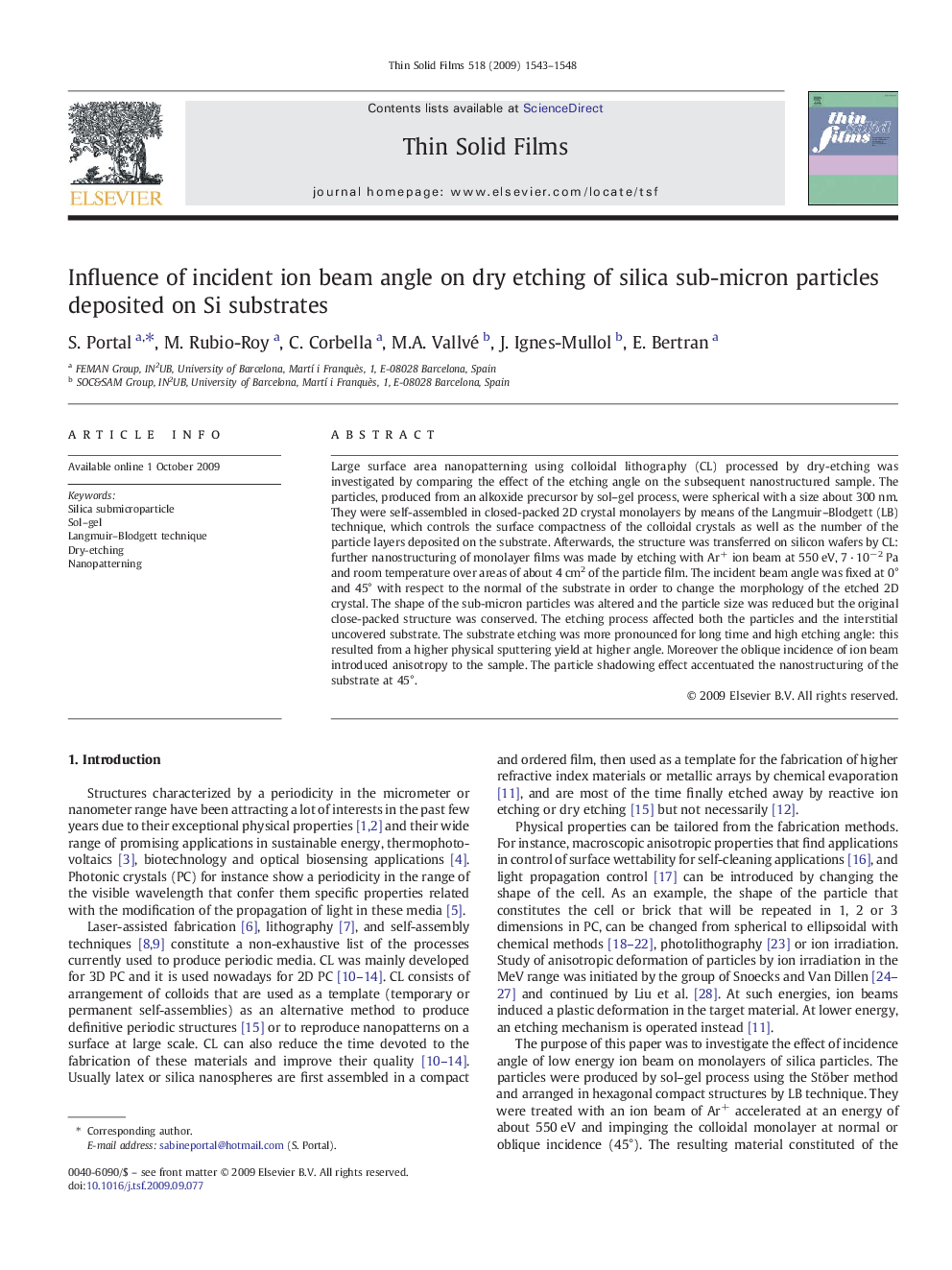| Article ID | Journal | Published Year | Pages | File Type |
|---|---|---|---|---|
| 1671880 | Thin Solid Films | 2009 | 6 Pages |
Large surface area nanopatterning using colloidal lithography (CL) processed by dry-etching was investigated by comparing the effect of the etching angle on the subsequent nanostructured sample. The particles, produced from an alkoxide precursor by sol–gel process, were spherical with a size about 300 nm. They were self-assembled in closed-packed 2D crystal monolayers by means of the Langmuir–Blodgett (LB) technique, which controls the surface compactness of the colloidal crystals as well as the number of the particle layers deposited on the substrate. Afterwards, the structure was transferred on silicon wafers by CL: further nanostructuring of monolayer films was made by etching with Ar+ ion beam at 550 eV, 7 · 10− 2 Pa and room temperature over areas of about 4 cm2 of the particle film. The incident beam angle was fixed at 0° and 45° with respect to the normal of the substrate in order to change the morphology of the etched 2D crystal. The shape of the sub-micron particles was altered and the particle size was reduced but the original close-packed structure was conserved. The etching process affected both the particles and the interstitial uncovered substrate. The substrate etching was more pronounced for long time and high etching angle: this resulted from a higher physical sputtering yield at higher angle. Moreover the oblique incidence of ion beam introduced anisotropy to the sample. The particle shadowing effect accentuated the nanostructuring of the substrate at 45°.
